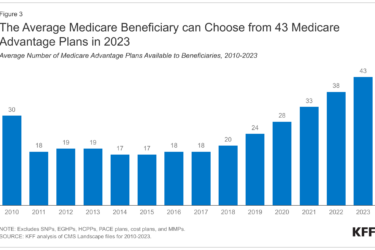One of the high-profile programs within the Affordable Care Act is the drive to reduce preventable hospital readmissions among the Medicare population. The program focuses on fee-for-service patients who came back to the hospital within 30 days. Hospitals in the third year of the program face a fine of up to 3 percent of their Medicare payments. Kaiser Health News analyzed the most recent CMS hospital data, and found more than 2,600 hospitals faced penalties in the last round and could lose $400 million.
Reducing unnecessary hospitalizations is a good idea, pretty much a slam-dunk quality move.
But is the readmissions program using the right metrics? Are hospitals that are doing all the right things cutting both readmissions and admissions – and therefore facing penalties because the proportion isn’t dropping, the readmission rate is the same share of the total admissions? Some new research suggests that may be the case. As Joanne Lynn, M.D., a geriatrician and prominent health policy researcher put it (and I’m paraphrasing), it’s the denominator, stupid.
Lynn, director of the Center for Elder Care and Advanced Illness at the Altarum Institute, drew these ideas out in a 2013 article in the Journal of the American Medical Association (summarized here), and now she’s released some detailed hospital data from San Diego County. Health care there was, relatively speaking, efficient from the starting point, and it got better. But some of the hospitals with low numbers of readmissions, which had brought them even lower, were still getting penalized.
That’s because when they took steps to lower 30-day readmissions for the specific conditions in this program – better discharge plans, care transitions, more coordination of community-bases services, medication reconciliation, home-based care and monitoring – they reduced lots of other admissions.
Lynn told me she thinks it’s time for Medicare to give the program – and its own extensive data – another look. She’s not against reducing readmissions. Indeed she believes the program has been a catalyst for care improvement. But as it’s currently designed, she believes, it’s also penalizing some of the “good actors.”
Her San Diego data found that Medicare fee-for-service hospitalization rates were lower than the nation as a whole. San Diego’s were 56 per 1,000 beneficiaries, while the national average was 69. The county lowered the rates overall even more under the ACA incentives. But of the 14 hospitals, 10 still had penalties.
So look at the hospitals in your communities (the data files are available through Medicare – scroll down – and Kaiser made it more user friendly). Who is reducing the total number of readmissions – and who isn’t? What’s happening to other hospitalizations – outside the 30-day readmissions for the specified conditions. (It started with heart attack, pneumonia and heart failure, and later added COPD and knee/hip replacement). What is the spillover effect, for better or worse, in community-based and home-based care. And are the good guys being hurt?
Related
Reporters can use hospital readmission data to explore key issues









